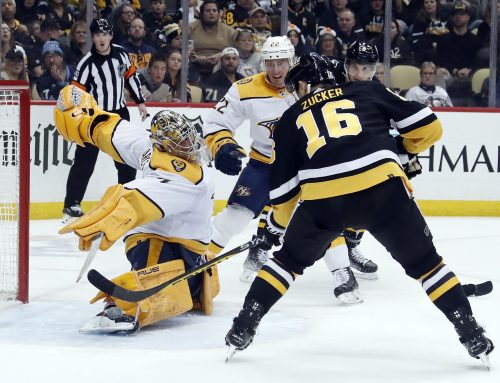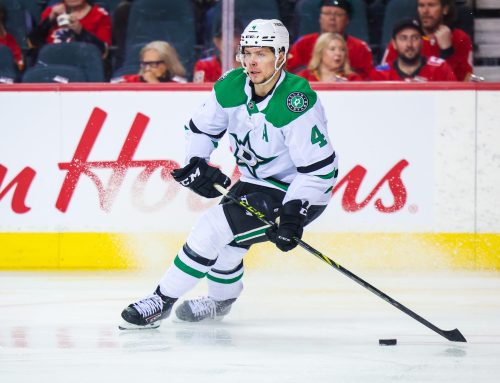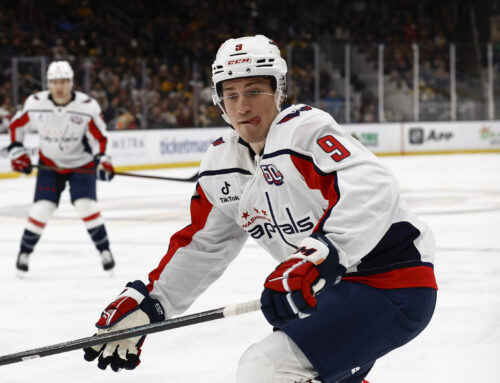
This week's Capped examines the Stanley Cup finalists, and what we can learn from them and their cap management.
****
For my household, this is going to be an amazing Stanley cup final. My brother has been a Penguins fan since the Mario Lemieux days, and I have been a Predators fan since the days of Paul Kariya and Tomas Vokoun. Over the next two weeks, it is understood that one of us will be thrilled, while the other will be disappointed with the results. The hope is that in this article we can examine the two teams, break them down, and try to draw a few conclusions as to why they were such successful teams, both talent-wise and salary cap-wise.
The Construction
From the foundation up, there are some obvious similarities and differences with these teams.
.png)
The teams are built on different philosophies due to their location in hockey/non-hockey markets, however they have been built in a similar fashion. Pittsburgh has grown into a large hockey market, and is able to spend with the big boys now, as evidenced by their final payroll of almost $78-million (the current cap ceiling is $73-million). They were able to do this due to their excess costs being eaten up by the long-term injured reserve (LTIR). Nashville on the other hand is a city ruled by country music, and where hockey is just an afterthought to the football team, among other NCAA sports. As such, since their inaugural season in 1998-99, Nashville has been a budget team, and has the seventh-lowest payroll in the league this season.
As different as the team salaries may be, Pittsburgh and Nashville were still grown in a very similar fashion. Both teams have had some very productive drafting over the years, complimented by some shrewd trades, and then they only had to fill in some small gaps with free agent signings. Pittsburgh had the benefit of a few successive years of top picks, meaning their trades were more complementary pieces around the drafted core. Nashville on the other hand has drafted their defence and goaltending, and then traded for forwards and P.K. Subban.
Forwards
Pittsburgh’s strong forward core is a testament to their draft success over the last number of years. As a result, it is also where they spend a large amount of their cap space (Evgeni Malkin, Sidney Crosby, and Phil Kessel carry an annual cap hit of $25-million).Two top centres seems to be the necessary ingredient to winning a Stanley Cup in this day and age, so with two of the top centres in the league, it doesn’t matter what they get paid, Pittsburgh will roster them and fill in parts around them as needed. The Kessel trade then brought in another scoring threat, and development from the minors has filled in most of the rest.
Nashville’s forward core is much more balanced, in terms of talent and salary. Nashville’s highest paid forward this past season was Fillip Forsberg at $6-million, and they only had three forwards making over $4-million. Throughout the season, the top line of Ryan Johansen, Victor Arvidsson and Forsberg has been one of the best in the league, at a total cap hit only slightly higher than Malkin’s. Nashville and Pittsburgh both insulate their top talent well with inexpensive depth forwards, so the top end is where we see the real difference. Perhaps the lack of a top-flight number two centre can work in the regular season, but if it wasn’t for the emergence of Colton Sissons during the playoffs, Nashville may have been home for good by now.
Defence
Depending on the health of Kris Letang, the narrative around Pittsburgh’s defence core changes drastically. Letang is the biggest band-aid-boy in the NHL today, but he is also one of the top defencemen in the league when healthy. Behind Letang and his $7.5-million salary, there is a mix of steady veterans, and less-proven younger skaters. However, there isn’t really a number two defenceman on this team. A case could be made for Justin Schultz after his breakout season, but one season does not make a stud, and Schultz may be moving on in the summer anyways. The bargain strategy has been employed to fill out the depth to great effect, similar to the forwards from both teams.
The Nashville defence on the other hand has an obvious top four, including one massive contract (Subban), and three of the best cap bargains in the league. Part of the reason General Manager David Poile has been so successful as a team with an internal budget, is that he has been able to lock up players like Roman Josi, Mattias Ekholm, and Ryan Ellis to long-term, low-hit contracts before they break out. Nashville’s bottom pairing is filled out by two very capable free agents (the only free agents currently on the roster), both contracts paying them less than $1 Million. Even at that price they have been a very serviceable third pairing to roll out after the top four mentioned earlier.
Goalies
Both teams here have an incumbent goaltender on a large deal, and a talented youngster still getting paid a rookie salary. The difference is that Matt Murray (Pittsburgh’s rookie goaltender) has taken the reins as the full starter. Despite Marc-André Fleury’s bigger contract, he has been pushed aside. Due to the Vegas expansion draft, he will likely be gone this offseason one way or another, freeing up more than $5 million for Pittsburgh, making it much easier to keep their core intact and insulated.
On the other side of the coin, Nashville found enough success in the regular season riding their $7-million dollar man Pekka Rinne into the playoffs, spelling him on occasion with the youngster Juuse Saros. Saros looks poised to take over the starting job soon, but Rinne has two years left on his contract, and that is a massive roadblock. Either way, Nashville is solid in net, and thus far in the playoffs, getting what they’re paying for (under the opinion that the majority of the goals in game one were not Rinne’s fault).
Conclusions
There are many things that we can learn from these two teams, but the thing that seems to stick out most is the roster construction. Neither team has at all relied on signings; instead they grew through solid drafting, and when the teams noted an area of weakness, they filled it by targeting a specific piece to fill in the hole. The best way to apply this to a fantasy team is by fully understanding where your holes are, and not trying to make short-term fixes, especially not overpaying to do so. Find the piece needed to fill the hole, nothing fancier, and pay a fair market price for it – end of story.
The forwards and the defence can’t really tell us much on their own, but looking at the whole group of skaters together, they tell you that there is not just one right way to be successful. Find and plan a strategy, and stick to it. As soon as a strategy starts wavering, the momentum is lost. Build up on an area of strength, nurture it, and then fill out the extra pieces from there. In a cap league, depending on the structure, knowing the league and the best place to start building is likely also a key. Play to your strengths, and make sure that the key pieces can then be insulated with cheap production.
Next, we see the goalies. I touched on this last fall, looking at the general NHL, and noted that the teams who managed to get decent goaltender production, without it getting too pricy, were at a real advantage. The same stands true here, as Rinne’s contract starts to look like a real albatross with Saros ready, and new deals coming up for Johansen and Arvidsson, among others. Paying for top-tier goaltending is great, but rather than paying for second-tier goaltending, try spending the money elsewhere and finding more of a bargain net-minder to fill the space instead.
Lastly, it is worth pointing out how both teams are built to last down the line. Crosby and Malkin are star players, but they took less money to make the team better. Meanwhile, the Nashville defence, as well as other players such as Calle Jarnkrok and Forsberg, should be bargains for many more seasons. Investing earlier than the curve takes an eye for the game that is tough to get without experience, but this kind of thing pays off big in the long run. It is not always the star players that you need to invest in at a young age, it is the second tier players that provide peripherals who can be the best bargains for years on end.
****
You can find me on twitter @alexdmaclean where I will most certainly be tweeting about the Stanley Cup finals, as well as providing other (mostly) hockey related tidbits and musings.
****
More Capped:





 EDM
EDM FLA
FLA DAL
DAL CHI
CHI OTT
OTT STL
STL L.A
L.A ANA
ANA CBJ
CBJ VGK
VGK
